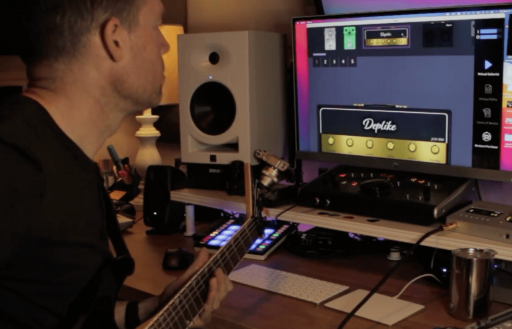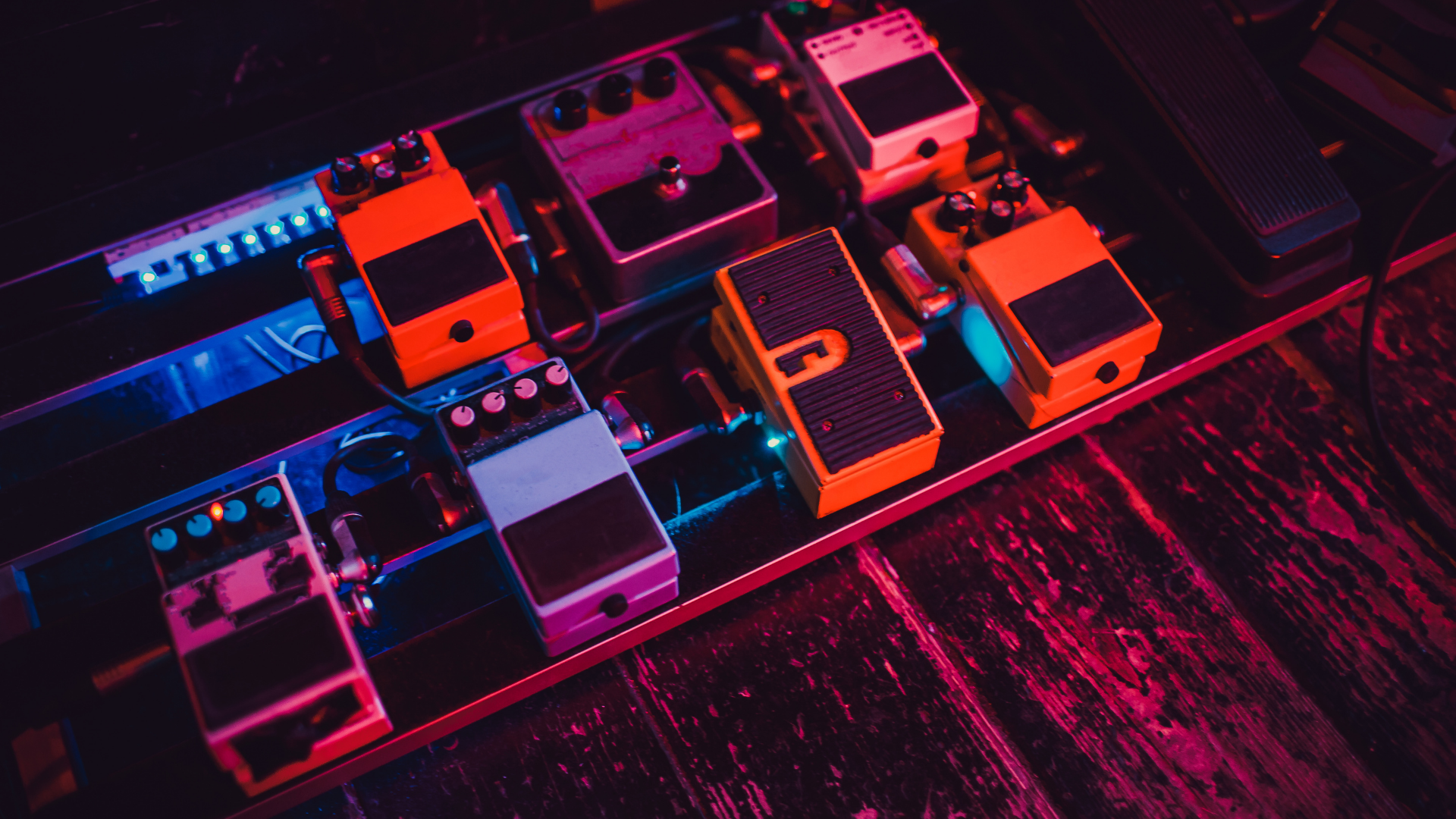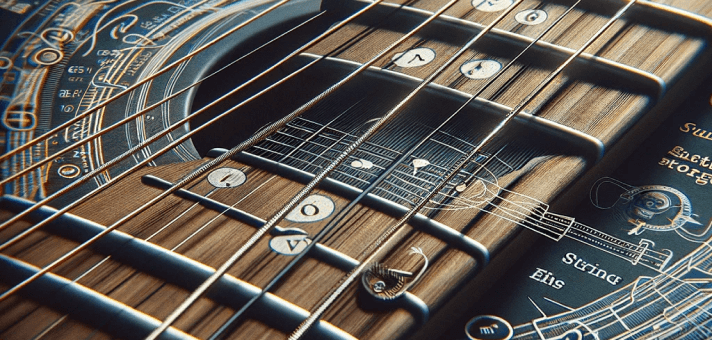Most Effective Ways to Use Single Looper
Have you ever witnessed any solo musician sound like a band? Have you ever wondered if you have seen it? If they have pre-recorded tracks, they are likely to use them while playing live. But there’s another way, and that’s the single looper pedal, which lets musicians create layers of sound while playing live. Aside from being used by professional musicians, these units can also be used by aspiring musicians to develop their musical ideas. They can be used in various settings, such as live performances and the practice room.
Most people who buy a guitar looper pedal are first-time users looking to play some parts or build up their guitar skills. Once that’s done, they’re left with a potentially large chunk of their pedalboard real estate. What else can be done with it?
The guitar looper is more than just a mere recording device. It’s also a lot more than just playing back looped audio. There are many things that the guitar looper can do that are similar to digital delay, except that it’s recording a bit of audio and then replaying it. This allows one to have complete control over how and when the audio will play.
If you have never used a single looper pedal before, this will be a great introduction to the guitar loop pedal. I highly recommend everyone’s one. You can try the virtual looper pedal because it is cheaper than the real one and easy to use! There are many uses for a looper pedal, and this article will cover all of the potential uses of a looper pedal. Also, we will talk about how to start and build up some basic skills.
What is Single Looper Pedal?
A single looper pedal is a device that uses its footswitch to record and playback audio. You use a single looper pedal to record and playback your playing on the fly. The loops are created by a single looper pedal playback in real-time, allowing a musician to create a vast and polyphonic sound using their performances. You plug your guitar into the single looper and connect it to your amplifier. To start recording, you stomp on the pedal’s footswitch. Then, you play something to record and then stomp on the pedal again to stop the recording. We call this continuous recording a loop. A guitar looper pedal is a great tool for any guitarist to get more out of their practice and performances. They are great for improving your guitar playing, but they can also teach you about music composition and harmony.
A Guitar Loop Pedal
A guitar loop pedal is used to record short passages and then plays them back in a repeating loop. Originally, this technique was used for playing the guitar. Today, it’s widely used by musicians who use various instruments and vocals. Some famous examples of looped musicians include Ed Sheeran, Imogen Heap, Paul Gilbert, Ed O’Brien, Bill Kelliher and KT Tunstall. Ed Sheeran’s performance of “You Need Me, I Don’t Need You” is a great example of the progressions created with the single looper. Ed Sheeran uses a guitar loop pedal to create complex sounds and harmonies. The basic backing helps him build up the song’s complexity.
All loopers will have their own set of start/stop and play/stop functions. Some allow additional layers to be added or removed from the original loop. Some loops can run in half-time or double-time. Others can be programmed to record and playback their loops later.
There are many ways to use a looper pedal, but it can be hard for some guitarists to get the most out of it. Aside from not knowing what to play, some people also struggle to time the beginning and end of a loop correctly. This article will also talk about some of the most common issues preventing them from playing well with their device.
How does Single Looper Pedal Works?
Single looper pedals record audio fed into them using an XLR or a 1/4″ instrument cable. They then output the audio as a WAV file and can instantly play it back when a musician steps on one of their switches. They can then playback this audio using their onboard memory or an external SD card.
A single looper pedal is to record the sound coming into a guitar and then play it back through an audio device. This process is done by sending the recorded sound to an amplifier and speaker. There are three main controls to use a single looper pedal:
1. The Record Switch – It is located on the top of the loop pedal. It displays a red button that indicates that you want to record your first loop. You can then press the button again to start playing the new track.
2. The Switch – The backside of the pedal features a switch that allows you to control which instrument you want to play the loop from. The Switch allows you to play the looped portion from a different instrument or send the resulting sound to your amplifier.
3. The Level Control – You can adjust the sound you recorded by turning the level control knob up and down.
The basic setup of the single looper pedals is that they come with an integrated guitar and amplifier. They can be placed under your existing audio equipment or on shelves. There’s no way to tell where you’re playing the song as far as its structure. Each time you record a section, another portion of the song will be played, and you may get different sounds from different effects.
What Can You Do with Your Single Looper Pedal?
Playing rhythm guitar is also a great way to keep up with the music. You can also work on rhythm guitar by using various types of pedals. With the help of loop pedals, you can also experiment with different types of rhythm and develop your own unique sound.
With the loop pedal, you can record short chord progressions and then play over top of them. You can also practice making rock-inspired soloing moves with the help of the loop pedal. This feature can help you transform a one-person band into a multi-instrumentalist band. Once you’ve mastered the skills, you can play over the top to create a full-band gig.
As a device that can playback and record chord progressions, a single looper is a great way to practice guitar solo technique. When you playback the progression, you can then practice various guitar techniques. A single looper is also beneficial for songwriting as it allows you to practice various parts of a song in a continuous manner. It’s also great for lyric writing. The art of looping is mainly about rhythm. The first passage of a song needs to be recorded correctly to work properly. This technique can be very challenging at first, but once you master it, you can start playing with different rhythmic guitar patterns. When playing live, musicians often use a single looper pedal to replicate the feeling of being in a live band. It’s often possible to use the first passage to set up a percussive loop that then adds a basic melody or bass line.
How to Start and Stop Your Single Looper Pedal Correctly?
One of the most important things to remember when using a looper is how to start and stop your recording on time. This ensures that your music continues to play smoothly. For instance, if you want to record some music using an A minor chord, then record yourself playing four notes on an Am chord.
Before recording, strum the Am chord for a moment and ensure that your timing is steady. While strumming the notes on the chord, start recording by striding on the looper pedal. Once you have gotten used to the rhythm, stomp on the looper pedal to begin recording. You should do this simultaneously as you are playing the chord.
While recording, maintain a steady rhythm while playing the notes. When you come back around to beat 1, stop the recording and strum down across the guitar strings simultaneously. After stopping the recording, most looper pedals start playing back the recorded segment in a continuous loop. This mode usually continues until you stop it. You can then stop it by pressing a double tap on the footswitch.
Effective Single Looper Pedal Tricks
The simple act of moving a single looper in a chain can also create new ideas. In the examples below, this article shows you how to move a single looper in a chain. Here are a few favourite tricks that can allow creation of new things:
Pads
Many looper pedals have a half-time setting, which can be used to create pads for ambient sections or transitions. Even if a background pad is out of sync with the band, it’s likely to be unnoticed by the audience if it’s not too loud. A good way to make a smooth recording is to use a volume pedal or guitar’s volume knob for swelling the chord progressions while you’re recording gradually. After you’ve got your loop, turn the speed of the instrument’s variable speed knob to the minimum or the dedicated half-time setting.
Stutter
Stutter is commonly used in tech metal and math-rock. It’s very simple to do, and it can be achieved with delay pedals such as the Boss DD series. Usually, this method is performed by capturing a tiny audio fragment and letting it play. The effect is different depending on the length of the capture.
Reverse Solo
This feature only works with certain types of loops, such as those with dedicated effects triggers. You can play your solo and then switch between play and reverse modes on the looper using your feet. If the looper doesn’t support this feature, then play the loop during soundcheck and then trigger it in reverse mode later. This feature allows you to play a looped track without being seen to play it first. It also makes the looper a one-trick pony.
Punctuation
You can create a small chunk of articulation within a riff by taking a transition between two notes and then retriggering it somewhere along the way. This trick is a bit of a niche technique that works well in certain genres of music. For this trick, we usually find loops that don’t allow multiple loops or dedicated micro phrase loops that only capture a tiny buffer. For this trick, we only catch part of the high note in a riff. We deliberately only slide it up to it to create a glitchy effect.
Record and manipulate
In most cases, people end their looper at the end of the chain, but there are also a few who have found a way to put it in the middle and then add a delay or wah later. By adding a wah to a loop, you can play it instantly and filter it. By adding distortion, you can also make a loop look like a lo-fi version. Depending on how involved you are in your manipulations, you may not be able to continue playing. You’ll need an A/B box to help direct the signal and a mixer after all of your pedals.
Stacking Drones
If you’re already familiar with a chord that will lead to a song or section, it’s a great idea to start with a single note and add in additional harmonies. The trick is to set the mix volume to just below unity so that when playing the drone note, you’re not creating gaps or silence. You can also volume swell once you’ve got more notes in each note.
Most Effective Ways to Use Single Looper: Summary
The looper pedal is an essential component of any musician’s arsenal. It makes practising more enjoyable and can help build up some of the most impressive live loops. The ability to playback tracks is also very useful for composing music. It allows musicians to experiment with different layers and sounds.
Most of the time, people use looper for solo acoustic musicians and vocalists to bring multiple instruments into their performances. If you’re a creative person, you can use loops as samples to enhance your performance. Just make sure that you’re using the right tools and techniques to get the most out of them.
Now, how to get the guitar tone you want?
Improving your guitar playing skills requires constant work on two main items: 1. Shaping the tone with your fingers; 2. Tweaking the guitar effects and amps to shape your guitar sound.
We all want to sound like our idol, right?
Getting the guitar sound of your favorite guitarists/band can be very costly and frustrating. It can require years of expertise to achieve your desired guitar tone.
Don’t worry, you don’t actually have to break the bank and spend years to get that sound.
Deplike Guitar FX Amp Sim suite plug-in got you covered on all Windows, macOS, iOS and Android devices. All you have to do is plug your guitar and play!





